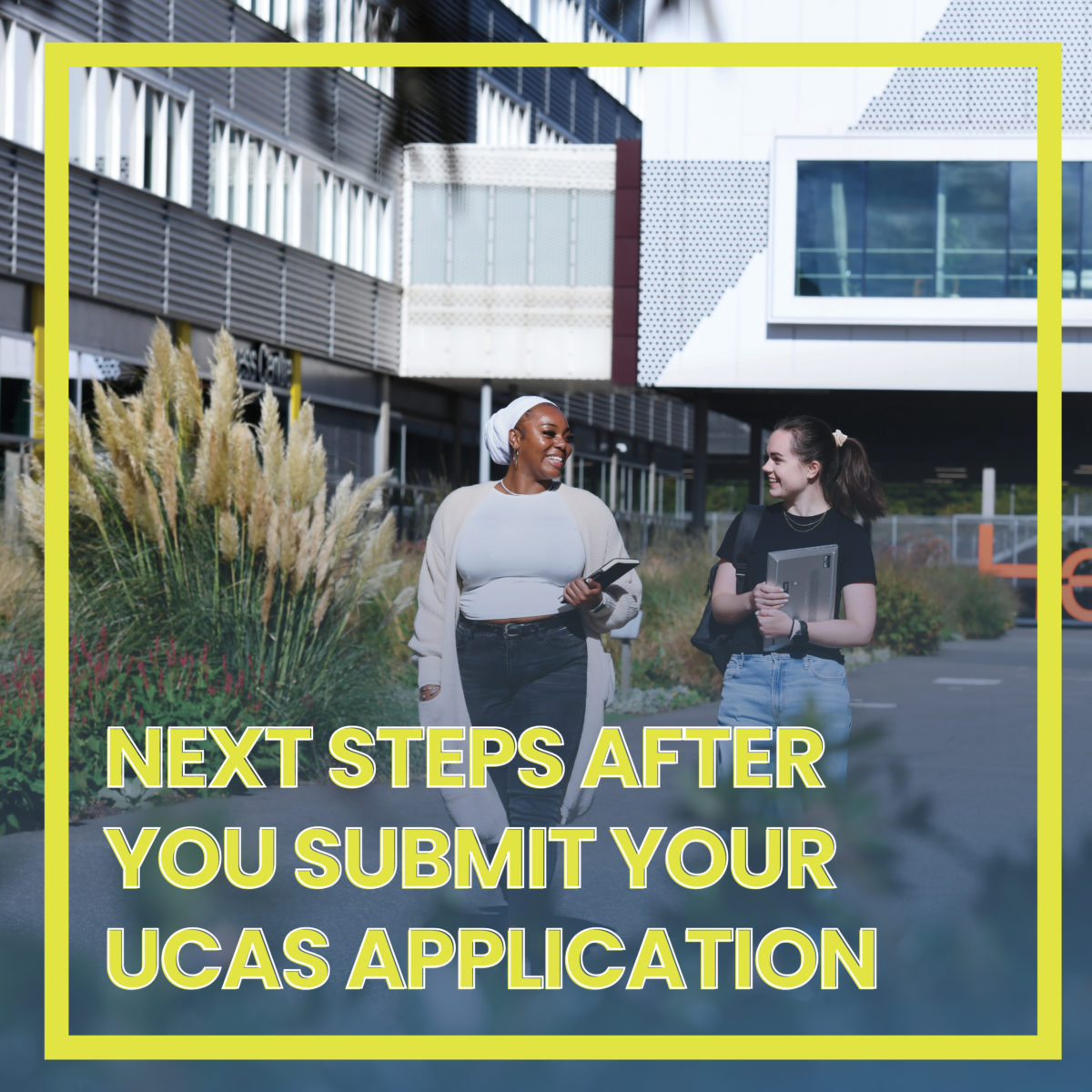So, you’ve hit ‘submit’ on your UCAS application – congratulations! – but what happens next? Here’s a rundown of what to expect over the coming months.
- Track your application
Once your application is submitted, UCAS will send you an email confirming receipt. You’ll also get details on how to log into UCAS Hub, where you can track your progress and see university decisions as they come in.
- Wait for decisions
Universities will now review your application. This process can take time – some offers come quickly, while others may take longer. Don’t worry if you don’t hear back straight away. The course you applied for may affect response times too, as universities assess applications in different ways and some may invite you for an interview, assessment or request a portfolio submission before deciding.
- Understand your offer
Once you receive an offer, it will be one of the following:
- Conditional Offer: you have received an offer, but you need to meet specific grades or requirements – this will be detailed in the offer.
- Unconditional Offer: you’ve secured a place with no further conditions.
- Rejection: not the outcome you hoped for, but you still have plenty of options.
- UCAS Extra
If you’ve used all five choices and haven’t received any offers, UCAS Extra gives you another chance to apply to universities with available places. Extra runs from late February to early July, allowing you to apply for one course at a time until you receive an offer you’re happy with.
You are also eligible for Extra if you withdraw all previous applications or decline all offers received. Alternatively, you can wait for Clearing in July if you need more time.
- Reply to offers
Once you’ve received responses from all your chosen universities, you will need to select:
- Firm choice – Your first-choice university.
- Insurance choice – Your backup option.
Choose carefully, as changing later can be complicated. Consider entry requirements, course content and if you would be happy studying there before accepting.
- Apply for student finance and funding
Now is the time to look into student finance and funding. Applications for funding open early in the year, and there may be other opportunities, such as scholarships and bursaries, that you’re eligible for. Check deadlines so you don’t miss out.
- Prepare for exams
If you have conditional offers, your exam results are key to securing your place. Stay focused on your studies and aim for the required grades. If you don’t quite meet them, Clearing provides another opportunity to find a course.
- UCAS Clearing
If you don’t meet your offer conditions or decide to change your plans, UCAS Clearing is available from July to September. This process helps students find university courses that still have places available. Universities will list their available courses, and you can contact them directly to discuss your options.
- Results day and confirmation
On results day, you will see if you met your offers in UCAS Hub. If you meet your firm choice, congratulations! If not, your insurance choice might still be available.
If neither works out or you change your mind, Clearing is there as an alternative. To prepare, research courses and universities in advance and make a list of contact details for the institutions you’re interested in. Over 60,000 students use Clearing each year, so stay positive as there will be options for you to explore.
- Get ready for university!
Once you’ve secured your place, it’s time for the final preparations. Make sure to:
- Confirm your finance and funding (if applied)
- Purchase any necessities
- Plan your commute
- Keep an eye out for emails about enrolment and next steps from your university. Check your spam folder or contact the university if you don’t receive anything.
The wait can feel long and nerve-wracking, but stay patient, keep checking UCAS Hub and focus on your studies. Whatever happens, there are always options and people who can help.
Good luck, and we hope to see you soon!




